Collection
M 028, Record Group 18:
|
Historical note: As noted in the history quoted
below, the 6th Judicial District was formed as a result of an Act by the
Colorado legislature in March of 1881. [Prior to that, parts of it were
included in the 4th Judicial District; La Plata County was in the 7th District,
presided over by Judge M. B. Gerry.] As first formed that District
encompassed the San Luis Valley region, plus Fremont and Custer counties.
In February of 1885, the legislature removed
those two counties from that district and added the counties of La Plata,
San Juan and Dolores. A third act, in March of 1887, added Archuleta and Huerfano
counties to the District. In 1891 the legislature passed an Act (vetoed by
Governor Routt but overridden by both houses) dividing the State into thirteen
Judicial Districts, which formed the 6th District as it was henceforth known.
The sources of this historical information are all in Series 18.5 in Collection
M 028
(La Plata County Government records), and
include:
-
Anonymous, "District Courts of the San Luis Valley."
-
Colorado Session Laws, 1881-.
-
McMechen, Edgar C., Executive Director, The State Historical Society of Colorado, letter to Judge James M. Noland, October 16, 1947.
6th Judicial Court (La Plata County, Colo.) judges list
|
Judge's
name |
Years
|
Portrait
|
| Thomas M. Bowen (Del Norte) (4th District) | 1875-1880 | |
| Thomas A. McMorris (4th District) | 1880-1881 | |
| Joseph Church Helm (southwestern Colorado) | 1880-1881 |
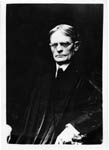
|
|
Charles D. Bradley (Silver Cliff) (appointed by the Governor, apparently to fill the unexpired term of Judge Helm) |
1881-1882 |
 |
|
Charles D. Hayt (Alamosa) (elected in the fall of 1881) |
1882-1889 |
|
|
George T. Sumner (Durango --and henceforth) (d. 1908) |
1889-1895 |
|
|
James L. Russell |
1895-1907 |
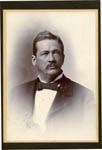
|
|
Charles A. Pike |
1907-1913 |
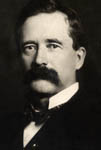
|
|
1913-1932 |
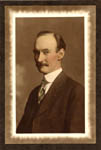
|
|
|
John B. O'Rourke |
1932-1947 |

|
|
James M. Noland |
1947-1968 |
|
|
James M. Noland |
1953-1968 and |
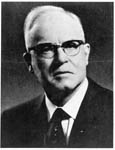
|
|
James M. Noland and Willard W. Rusk |
(still) and
1963-1964 |
|
|
James M. Noland and |
(still) and
|
|
|
William S. (Bill) Eakes and |
1965-1982 1969-1973 |
|
|
William S. (Bill) Eakes and |
1965-1982 |
|
|
William S. (Bill) Eakes and |
1965-1982 |
|
|
Al. H. Haas and |
1981-1996 |
A HISTORY OF THE DISTRICT COURTS OF THE SAN LUIS VALLEY
[Author unknown. Source:
partial typescript in Collection M 028, Series 18.5]
When Colorado Territory was organized on February 28, 1861, the judicial sections of the Organic Act of Congress divided the territory into three judicial districts and provided for a District Court in each. The Supreme Court of the territory was to consist of a Chief Justice and two associate justices, Each justice was assigned one of the judicial districts, and between sessions of the Supreme Court, they presided over the District Courts, which were to be held in each of the county seats of the seventeen counties in the territory. Territorial Judges were appointed by the President of the United States for a four year term.
The Organic Act had authorized the Governor to define "temporarily and until otherwise provided by law" judicial districts, assign judges, and appoint times and places for court terms.
By proclamation issued July 11, 1861, Governor William Gilpin established and assigned temporary districts. The first Territorial Assembly convened in Denver on September 9,1861, and on November 8, 1861, established judicial districts, and assigned Judges to the 1st and 2nd Judicial Districts. No judge was assigned to the 3rd Judicial District at this time because a vacancy already existed. Initially, the 3rd Judicial District consisted of the then existing counties of Lake, Fremont, Pueblo, Huerfano, Conejos and Costilla.
The Second Territorial Assembly, by an Act dated August 15, 1862, realigned the judicial districts. The 3rd Judicial District was to consist of the then existing counties of Conejos, Costilla, Huerfano, Pueblo, Fremont and El Paso. Judge Allen A. Bradford was assigned to the 3rd Judicial District.
Judge Charles Lee Armour of Maryland, appointed March 28, 1861, was assigned to the 2nd Judicial District, with court at Central City. He became so unpopular within a year after his arrival at Central City that, after petitions for his removal had proved unavailing, the legislature by an Act adopted March 5, 1864, redistricted the territory - our first legislative gerrymander - and assigned him to the new 3rd Judicial District consisting only of the Counties of Conejos and Costilla.
"But with sublime defiance, he refused to visit his adobe castles in Spain or resign his office - but smilingly smoked his imported cigars, sipped his toddies, of which he was fond, drew his salary, of which he was fonder, and held out his term of office as a gentleman of elegant leisure". Justice Wilbur F. Stone, 34 Colo. XXV (1905).
Judge Armour "completed" his term on March 28, 1865, and returned back East from whence he came.
With the impending departure of Judge Armour, the legislature on February 10, 1865, restored geographic equality to the judicial districts and the 3rd Judicial District was expanded to include the then existing Counties of El Paso, Fremont, Pueblo, Huerfano, Costilla and Conejos, and re-assigned Judge Stephen S. Harding from the 1st Judicial District to the 3rd Judicial District. There is no evidence that Judge Harding entered into the San Luis Valley wilderness and he precipitously resigned on December 31, 1865, and returned to his native state of Indiana.
The "vagabond" era ended with the appointment of Judge Moses Hallett on April 10, 1866. Judge Hallett was assigned as the District Judge of the 3rd Judicial District, and he held that position until the first State Judges were elected on October 3, 1876.
Extant records in the San Luis Valley Courthouses indicate that the first term of the Territorial District Court in the San Luis Valley was held in San Luis on August 8, 1866, Judge Moses Hallett presiding. For the next 10 years Judge Hallett continued to "ride the circuit" in the 3rd Judicial District. Arrival in the County seats of the Judge and his retinue, which included his clerk, a reporter, often an interpreter, attorneys, clients of the attorneys, and even prisoners, was cause for great celebration.
It should be noted that the District Judges of the San Luis Valley still "ride the circuit". The only difference being that they now use automobiles and airplanes rather than horses and wagons.
The judicial article of the Constitution of the State of Colorado provided for four judicial districts in 1876. Included within the 4th Judicial District were the then existing counties of the San Luis Valley (Costilla, Conejos, Rio Grande and Saguache), together with the then existing counties of San Juan, La Plata, Hinsdale and Lake.
However, in the early years of statehood judicial district boundaries were in a bi-annual state of change from 1877 until 1891 as new counties were created at almost every session of the legislature. No doubt a certain amount of politics was involved also in the shaping and re-shaping of judicial districts in these early years. In 1877, the counties of Gunnison and Ouray were created and attached to the 4th Judicial District.
On January 30, 1879, the legislature passed an Act expanding the counties within the 4th Judicial District to include the counties of Chaffee, Park, Carbonate and El Paso. This briefly brought the thriving "metropolis" of Colorado Springs within the 4th Judicial District.
Recognizing the need to reduce the size of Judicial Districts, the legislature, on March 55, 1881, passed an Act dividing the State of Colorado into seven judicial districts. The new 6th Judicial District consisted of the then existing counties of the San Luis Valley, together with the then existing counties of Fremont and Custer.
On February 13, 1885, the legislature passed an Act changing the counties within the 6th Judicial District. Fremont and Custer counties were attached to the 3rd Judicial District and the 6th Judicial District was expanded to encompass the then existing counties of the San Luis Valley, together with the then existing counties of Archuleta, La Plata, San Juan and Dolores.
On March 24, 1887, the legislature passed an Act further dividing the State of Colorado into nine judicial districts. The counties within the 6th Judicial District remained unchanged. Added to the 6th Judicial District was the county of Huerfano.
Finally, some degree of judicial stability was achieved when, on April 6, 1891, the legislature passed an Act dividing the state into thirteen judicial districts. The 12th Judicial District encompassed the San Luis Valley. In 1891, the San Luis Valley consisted of the counties of Costilla, Conejos, Rio Grande and Saguache. In 1893, Mineral County was created out of parts of Hinsdale, Rio Grande and Saguache counties and was attached to the 12th Judicial District. Alamosa County was created out of parts of Conejos and Costilla Counties in 1913 and was also attached to the 12th Judicial District. Today, the 12th Judicial District consists of the counties of Alamosa, Conejos, Costilla, Rio Grande, Mineral and Saguache.
Judicial Districts remained stable until the l4th Judicial District was added in 1921; the 15th was added in 19^5; the 16th in 1953; the 17th and 18th in 1958; and the 19th through 22nd Judicial Districts were created by Act of the 1964 legislature.
The District Court is Colorado's trial court of general jurisdiction. It has original jurisdiction in domestic relations, civil, juvenile, probate, mental health and criminal cases. It has appellate jurisdiction in connection with appeals from County Courts.
Trial Courts of general jurisdiction are distributed geographically throughout the state so that citizens will have easy arid convenient access to them. This is done by dividing the state into judicial districts and establishing a court for each geographical unit. There is a district judge for each geographical unit; and in judicial districts where judicial business is heavy, more than one judge is appointed or elected. The largest District Court in Colorado is in Denver (2nd Judicial District) where there are twenty-five judges.
By an Act approved March 28, 1951, an additional judgeship was created for the 12th Judicial District, consisting of the six Counties of the San Luis Valley, and there have been two district judges in the San Luis Valley since 1951.
At the time Colorado became a state, it had a population of 194,100 and was served by 4 district judges; in 1950 the population of the state was 1,325,000 of which 30 were district judges; in 1960 the population increased to 1,786,000 and there were 39 district judges; by 1970 the population had increased to 2,178,000 and the number of district judges had increased to 75; in 1980 the. total state population continued to show dramatic growth and was recorded at 2,888,834 with 107 district judges attempting to handle the resulting litigation.
A 1966 Amendment to the State Constitution changed the method of selecting and removing judges. Previously, judges were elected on partisan ballots. Vacancies are now filled by appointment, and judges run for retention in office on non-competitive ballots.
Under the provisions of the 1966 Amendment to the Judicial Article of the State Constitution, District Court Judges are appointed initially for a two-year term and then run on their record for retention in office at the next general election for a term of six years.
District Court Judges must be qualified electors of the district in which they are appointed to serve and must have been licensed to practice law in Colorado for five years prior to their appointment.
Effective January 17, 1967, Article VI, Section 5(4) of the Colorado Constitution provides that the Chief Justice shall appoint a Chief Judge for each judicial district to exercise supervisory and administrative powers over all judges of all courts within each district.
Since 1967, the Chief Judges of the 12th Judicial District have been:
-
1967-1973 Richard E. Concur
-
1973-1980 Whitford W. Mayers
-
1980- Robert W. Ogburn
The Water Right Determination and Administration Act of 1969 set up seven water divisions in the state and established in each the position of Water Judge. The Supreme Court selects the Water Judges for each division from among the judges of the District Courts of the district situated entirely or partly within the division. The Water Judges have jurisdiction in the determination of water rights, uses and administration of water and all other water matters within the jurisdiction. Water Division Three consists generally of the Counties of the San Luis Valley, together with those parts of Archuleta, Hinsdale and San Juan Counties located within the Rio Grande Basin.
The Water Judges of Water Division Three, since its creation in 1969, have been:
-
1969-1973 Richard E. Concur
-
1973-1976 Donald G. Smith
-
1976- Robert W. Ogburn
BIOGRAPHICAL SKETCHES OF SAN
LUIS VALLEY DISTRICT JUDGES
3RD JUDICIAL DISTRICT
Allen A. Bradford, 46, Pueblo, was born at Friendship, Maine, on July 23, 1815. In 1841, he moved to Atchison, Missouri where he first took up the practice of law; he relocated to Iowa in 1851; and then to Nebraska in 1855. He initially settled in Colorado at Central City in 1860 and ultimately made his home at Pueblo in 1862. He was appointed Justice of the Territorial Supreme Court by President Abraham Lincoln on June 6, 1862, and served in that capacity and as District Judge of the 3rd Judicial District until March 5, 1864, when he was reassigned as District Judge of the 2nd Judicial District. He resigned from the Bench on March 3, 1865, to become territorial representative to Congress (1865-1867) and (1869-1871). In 1871, he returned to Pueblo, was admitted to the Colorado Bar on May 3, 1872, and resumed his practice of law in Pueblo where he lived until his death on March 13, 1888, at the age of 72.
Stephen S. Harding, 55, Denver, was born at Ontario County, New York on February 24, 1808, and was raised at Ripley County, Indiana. He practiced law at Versailles, Indiana (1829-1862) until appointed Territorial Governor of Utah on March 31, 1862, which position he held until January 1863 when he resigned. He was appointed Chief Justice of the Territorial Supreme Court by President Abraham Lincoln on July 10, 1863 and served in that capacity and as District Judge of the 1st Judicial District until February;'2, 1865, when he was reassigned as District Judge of the 3rd Judicial District. He resigned from the Bench on December 31, 1865 and returned to Indiana where he resumed his practice of law until his death on February 12, 1893 at the age of 84.
Moses Hallett, 31, Denver, was born at Galena,
Illinois on
July 16, 1834 and came to Colorado in 1860. He was admitted to the Colorado Bar on July 18, 1861.
He was appointed Chief Justice of the Territorial Supreme Court by
President Andrew , Johnson on April 10, 1866 and served in that capacity and as
District Judge of the 3rd Judicial District of the Territory of Colorado until
the first state judges took office on October 3, 1876. After the admission of Colorado to statehood, he was
appointed the first U.S. District Judge for the State of
Colorado by
President Ulysses S. Grant in January 1877 and served in that
position until his retirement on May 1, 1906. In addition, Judge
Hallett was the first dean of the University of Colorado Law School
(1892-1902). He also served as
President of the Colorado Bar
Association (1900-1901). Judge Hallett died April 25, 1913 at the age of
78.
4TH JUDICIAL DISTRICT
Thomas M. Bowen, 40, Del Norte, was elected District Judge on October 3, 1876 and served until May 25, 1880, when he resigned to engage in mining at Summitville. Born October 26, 1835 at Burlington, Iowa, he attained the rank of Brevet Brigadier General during the Civil War (1861-1865). After the Civil War, he settled in Arkansas and served as a Justice of the Arkansas Supreme Court (1868-1872). Thereafter, he settled in Del Norte in January 1875 and was admitted to the Colorado Bar on March 15, 1875. In November 1882 he was elected to the Colorado House of Representatives and during that session (1883) was elected to the United States Senate for a term of six years. In 1889 he returned to Del Norte and again engaged in mining. In 1892 Judge Bowen moved to Pueblo, Colorado where he died on December 30, 1906 at the age of 71.
Thomas A. McMorris, 44, Colorado Springs, was appointed District Judge by Governor Frederick W. Pitkin on May 26, 1880 to complete the unexpired term of Judge Bowen and served until January 11, 1881. Born November 24, 1835 in Muskingum County, Ohio, a Civil War veteran, he settled initially at Henry, Illinois. He moved to Colorado Springs in 1874 and was admitted to the Colorado Bar on March 12, 1875. After leaving the Bench, he engaged in an active legal practice in Colorado Springs for many years. Judge McMorris died February 22, 1916 at Monte Vista, Colorado at the age of 80.
Joseph C. Helm, 32, Colorado Springs, was
elected District Judge on November 2, 1880, took office on January 11, 1881, and
served
in that position as District Judge of the San Luis Valley until March 8, 1881,
the date of reorganization of the Judicial Districts. He continued serving as the District Judge of the newly reorganized 4th
Judicial District until January 9, 1883. Judge
Helm was elected to the Colorado Supreme Court on November 7, 1882, took office
on January 9, 1883 and served until September 24, 1892 when he resigned to run
for Governor of Colorado. He
subsequently was appointed to the Colorado Supreme Court again in November 1907
to fill a vacancy and served until January 11, 1909. Born June 30, 1848 at Chicago, Illinois, a Civil War
veteran,
he settled at Colorado Springs in 1874. He
was admitted to the Colorado Bar on December 2, 1874. Prior to going on the Bench, he served in the Colorado Legislature
(1876-1879) and the Colorado Senate (1879-1881). Judge Helm died May 13, 1915
at
the age of 66.
6TH JUDICIAL DISTRICT
Charles D. Bradley, 42, Silver Cliff, was appointed District Judge of the newly created 6th Judicial District by Governor Frederick W. Pitkin on March 8, 1881 and served until January 9, 1883. Previously, he had been a United States Attorney for the Territory of Colorado (1875-1876) and was admitted to the Colorado Bar on March 29, 1876. After leaving the Bench, he moved to Canon City where he served as a Representative in the Colorado Legislature (1885-1887). Judge Bradley was born February 11, 1839 at Albany County, New York and died at Florence, Colorado on July 12, 1919 at the age of 80. His brother, Joseph P. Bradley, was Justice of the United States Supreme Court (1870-1892).
Charles D. Hayt, 32, Alamosa, was elected District Judge on November 7, 1882, took office on January 9, 1883, and served until January 8, 1889. Born May 20, 1850 at Poughkeepsie, New York, he came to Colorado in 1870, first settling in Walsenburg and then Alamosa. He was admitted to the Colorado Bar on February 26, 1878 and was District Attorney of the 6th Judicial District from March 8, 1881 to January 9, 1883. Judge Hayt was elected to the Supreme Court of Colorado on November 6, 1888, took office January 8, 1889 and served until January 11, 1898. He also served as President of the Colorado Bar Association (1910-1911). Judge Hayt died January 8, 1927 at the age of 76 at Denver. '
George T. Sumner, 44, Durango, was elected District Judge on November 6, 1888, took office on January 8, 1889 and served in that position as District Judge of the San Luis Valley until April 11, 1891, the date of reorganization of judicial districts. He continued serving as the District Judge of the newly reorganized 6th Judicial District until January 8, 1895. Born June 30, 1844 at Appleton, Maine, a Civil War veteran, he settled in Durango in 1880. He was licensed as an attorney on January 19, 1881. He also served as District Attorney of the 6th Judicial District (1886-1889) and, after leaving the Bench, he moved to Denver. There he became an attorney for the Denver and Rio Grande Railroad and commuted between Denver and Alamosa, where he was in charge of the railroad's legal affairs, until his death on August 14, 1908 at the age of 64.
Al H. Haas: (The source of the following paragraph is Shane Benjamin's article in the Durango Herald on November 2, 2004, following the death of Senior District Judge Haas at his home in La Plata County on October 30, 2004:) "Haas moved to Durango in 1957 and took the job of assistant district attorney. He was elected to serve as district attorney in 1960 and was re-elected in 1964. Two years later, Haas resigned and began a private practice in Durango. He practiced privately until then-Gov. Richard Lamm appointed him to the bench in April 1981. He served until his mandatory retirement in May 1996, just before his 72nd birthday. After one year, he returned to work as a senior judge - a status that allowed him to work a limited number of hours at the discretion of chief judges. ... Haas is largely responsible for an expansion at the La Plata County Courthouse that includes the clock tower, said Steve Brittain, chief probation officer for the 6th Judicial District. Similar to the debate today, many people in the 1980s believed the courthouse should be relocated to Bodo Industrial Park. Haas felt strongly that the courthouse should stay in downtown Durango, and he helped convince county commissioners to expand the building, Brittain said. ... In addition to serving as a judge, Haas served in the U.S. Army, 1st Infantry Division, during World War II from July 1942 to April 1946, including campaigns in Sicily and North Africa. He graduated from Denver University with a bachelor's degree in 1949 and his law degree in 1951. He was a member of the Benevolent and Protective Order of the Elks No. 507 and the Colorado Bar Association."
Doing your own research: This description of a portion of the collections at the Fort Lewis College Center of Southwest Studies is provided to inform interested parties about the nature and depth of the repository's collections. It cannot serve as a substitute for a visit to the repository for those with substantial research interests in the collections.
These collections are located at the Center of Southwest Studies on the campus of Fort Lewis College. Interested researchers should phone the archivist at 970/247-7126 or send electronic mail to the archivist at: Ellison_T@fortlewis.edu. Click here to use our E-mail Reference Request Form. The Center does not have a budget for outgoing long-distance phone calls to answer reference requests, so provide an email address if you would like to receive a response.
Page last modified: November 30, 2004
